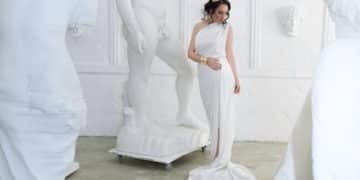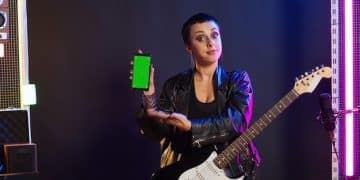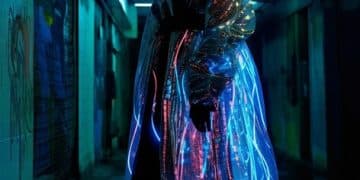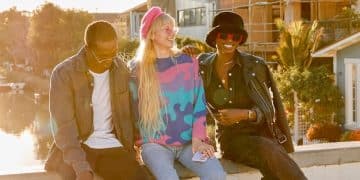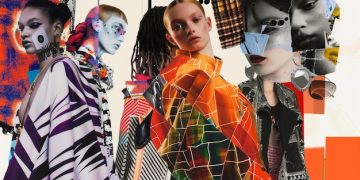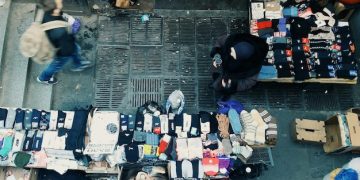The Art of Underground Fashion Illustration: Beginner’s Guide
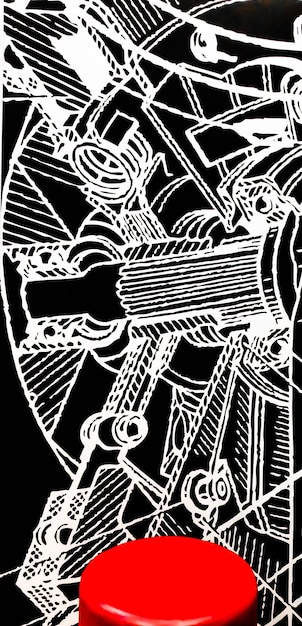
Unlocking the art of underground fashion illustration involves mastering diverse techniques, from traditional mediums to digital tools, offering beginners a unique pathway to express subversive styles and capture the essence of unconventional design through practical tutorials and foundational knowledge.
Diving into the art of underground fashion illustration offers a thrilling canvas for creativity, a space where conventional rules often give way to raw expression and untamed imagination. This guide is crafted to empower aspiring artists and designers, providing the essential techniques and tutorials needed to embark on this unique artistic journey.
The Essence of Underground Fashion Illustration
Underground fashion illustration is more than just drawing clothes; it’s about capturing a spirit, a movement, and an unconventional aesthetic that often challenges the mainstream. It thrives on individuality, raw emotion, and a willingness to break free from traditional norms. This artistic discipline serves as a visual language for subcultures, showcasing styles often overlooked by commercial fashion, focusing instead on independent designers, DIY aesthetics, and niche communities. Understanding this core essence is the first step in approaching the art form with authenticity.
Unlike high fashion illustration that emphasizes perfect proportions and luxurious fabrics, underground fashion illustration often embraces distortion, exaggerated features, and unusual compositions. It prioritizes mood and narrative over meticulous detail, aiming to evoke a feeling rather than merely document a garment. This allows for immense creative freedom, encouraging illustrators to experiment with various styles, from gritty, street-inspired sketches to surreal, abstract interpretations.
Defining Underground Aesthetics
The term “underground” itself implies a departure from the visible and widely accepted. In fashion, this translates to styles that are often niche, subversive, handmade, or inspired by subcultures like punk, goth, rave, or even historical counter-movements. Illustrating these looks requires an understanding of their unique visual cues, from particular silhouettes to specific textures and accessories. It’s about recognizing the details that make an outfit truly “underground” and translating them onto paper or screen with conviction.
- Subcultural Influences: Punk’s DIY ethos, Goth’s dark romanticism, or Cyberpunk’s futuristic grit.
- DIY & Handmade Elements: Distressed fabrics, patched garments, customized items.
- Anti-Commercial Stance: Focus on individuality over mass production.
- Experimental Proportions: Exaggerated limbs, elongated figures, or distorted bodies to convey mood.
The narratives often depicted in these illustrations tell stories of rebellion, self-expression, and community. An illustrator must immerse themselves in these stories, perhaps by researching the history of various subcultures or by directly engaging with underground fashion communities. This genuine interest translates into more compelling and truthful artwork, providing depth that resonates with those who appreciate non-mainstream fashion.
Why Illustrate Underground Fashion?
For many artists, underground fashion offers a liberating escape from the commercial pressures associated with mainstream illustration. It provides an opportunity to explore themes of identity, societal critique, and artistic freedom without the constraints of marketability. Furthermore, the strong visual identity of these styles lends itself well to dynamic and expressive illustration. Underground fashion illustrators are not just delineating clothes; they are interpreting a lifestyle, a philosophy, and a powerful form of self-expression. This makes the field incredibly exciting and personally rewarding for those who seek to push artistic boundaries.
Capturing the raw energy of underground fashion necessitates a less polished, more visceral approach. It’s about embracing imperfections and allowing the hand of the artist to be visible, mirroring the handmade and often gritty nature of the fashion itself. This honesty in execution is a hallmark of truly authentic underground fashion illustration. The challenge lies in translating intricate details like distressing, layering, and unique fabric manipulations into compelling visual narratives, often with a sense of rebellious abandon.
Fundamental Techniques for Beginners
Starting your journey in underground fashion illustration requires a grasp of fundamental techniques that build confidence and skill. While the underground aesthetic might encourage breaking rules, understanding the basics first allows for intentional deviation rather than accidental errors. This includes foundational drawing skills, understanding human anatomy in motion, and developing a unique mark-making style. Mastery of these elements provides the framework upon which more experimental and expressive illustrations can be built effectively.
The initial steps involve familiarizing yourself with various drawing tools and their properties. Pencil, charcoal, ink, and digital tablets each offer distinct textures and lines that can profoundly influence the mood of an illustration. Experimenting with different pressures, strokes, and blending techniques will help you discover what best suits your personal style and the specific underground aesthetic you aim to capture. Developing a strong hand-eye coordination is crucial for conveying the fluidity and dynamism inherent in fashion.
Mastering Figure Drawing for Fashion
Even in underground fashion, where proportions can be skewed, a basic understanding of the human figure is essential. You need to know how clothes drape, fold, and move on a body. This doesn’t mean drawing perfect anatomical studies, but rather understanding gestures, balance, and how body parts relate to each other. Focus on capturing the energy and pose of a figure, allowing the clothes to interact naturally with the body underneath. Start by sketching mannequins or simplified forms before adding clothing details.
- Gesture Drawing: Quick sketches to capture movement and energy.
- Proportional Understanding: Basic human body ratios, even if distorted later.
- Dynamic Poses: Figures that convey attitude and style relevant to underground fashion.
- Drapery and Folds: How fabric behaves on the body.
Practice drawing figures in various poses, focusing on the flow of lines and the weight distribution. Think about how the attitude of the pose complements the clothing, whether it’s a defiant stance for punk wear or a languid posture for a neo-romantic ensemble. Observation is key; study how people carry themselves, how their clothes fall, and how accessories are worn in real life, especially in subcultural contexts.
Choosing Your Mediums: Traditional vs. Digital
The choice of medium significantly impacts the final look and feel of your underground fashion illustrations. Traditional mediums like pencil, ink, markers, and watercolors offer tactile experiences and unique textures that are often sought after for their raw, authentic feel. Digital tools, on the other B hand, provide unparalleled flexibility, undo functions, and access to a vast array of brushes and colors, which can simulate various traditional effects while allowing for easy revisions and clean outputs.
Many illustrators choose to combine both approaches, starting with traditional sketches and then refining or coloring them digitally. Experiment with different types of paper, from smooth Bristol board for crisp lines to textured watercolor paper for atmospheric washes. For digital art, explore software like Procreate, Adobe Photoshop, or Clip Studio Paint, and invest in a quality graphics tablet. There’s no single “right” answer; the best medium is the one that allows you to express your vision most effectively and comfortably.
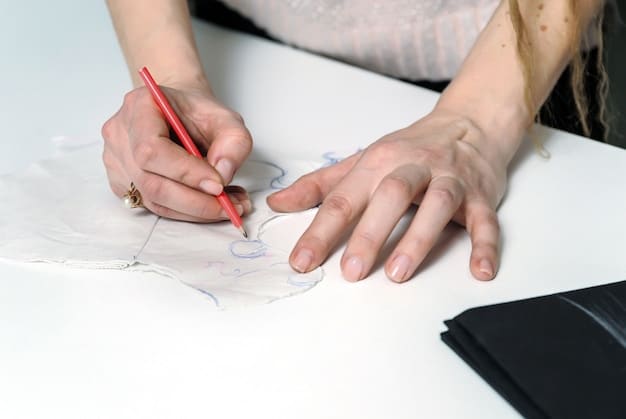
Developing Your Unique Style
In underground fashion illustration, having a distinctive style is paramount. It’s what sets you apart and makes your work recognizable within a crowded artistic landscape. This isn’t about copying trends but about finding your authentic voice and visual signature. Developing your unique style is an ongoing process of experimentation, self-reflection, and continuous practice. It involves exploring different artistic influences, refining your specific mark-making, and understanding what truly excites you about the subject matter. The underground scene celebrates originality, making this aspect even more crucial.
Your unique style will reflect your personality, your artistic preferences, and the specific narratives you wish to convey. It is a fusion of how you see the world and how you choose to render it visually. Don’t be afraid to embrace what some might consider “flaws” or unconventional approaches; often, these are the very elements that make an artist’s work compelling and memorable. It is through these deliberate choices that your authentic artistic voice emerges.
Inspiration from the Underground
To truly capture the essence of underground fashion, you must immerse yourself in its culture. This means looking beyond mainstream magazines and galleries. Explore independent zines, underground music scenes, street art, alternative fashion blogs, and vintage clothing archives. Attend local DIY fashion shows, flea markets, and niche conventions. Pay attention to how people express themselves through clothing in everyday urban environments. The raw and unfiltered expressions found in these spaces are often the richest sources of inspiration for authentic underground illustration.
- Independent Zines & Publications: Discover raw, unfiltered artistic voices.
- Street Style Photography: Observe real-world expressions of underground aesthetics.
- Music Subcultures: Punk, Goth, Hip-Hop, Electronic music for visual influences.
- Vintage & Thrift Stores: Find unique garments and styling ideas.
Drawing from diverse sources prevents your work from becoming derivative. Look at how different subcultures use color, texture, and silhouette to communicate their identity. Notice the details that define these styles—a particular type of stitching, a unique layering technique, or an unexpected accessory. This meticulous observation will allow you to infuse your illustrations with genuine depth and a sense of belonging to the underground narrative.
Experimenting with Exaggeration and Distortion
One of the hallmarks of underground fashion illustration is its willingness to embrace exaggeration and distortion. Perfect anatomical accuracy often takes a backseat to emotional impact and striking visuals. Don’t be afraid to stretch limbs, enlarge hands, or contort bodies to convey the mood or attitude of the fashion. Use disproportionate elements to create a sense of unease, drama, or playful chaos. This artistic freedom is what allows illustrators to transcend literal representation and delve into more symbolic and expressive storytelling.
Experiment with different levels of abstraction. Your figures don’t always need to be fully realistic; sometimes a few bold lines or a splash of color can communicate more effectively than intricate detail. Think about how texture can be exaggerated—a rough brushstroke to convey distressed denim, or sharp, angular lines for futuristic armor. The goal is not to reproduce reality but to interpret and amplify it through your unique artistic lens, pushing boundaries and challenging conventional notions of beauty and form.
Practical Tutorials for Beginners
Moving from theoretical understanding to practical application is where the real learning happens. These tutorials offer actionable steps for beginners to start creating their own underground fashion illustrations. They focus on accessible techniques that yield impactful results, encouraging experimentation rather than strict adherence to rules. By breaking down the illustration process into manageable steps, you can build confidence and develop a fluid workflow that suits your individual pace and creative preferences. The key is to start simple and gradually build complexity as your skills improve, maintaining an open mind to new challenges.
Practice is the most crucial element in mastering any art form, and underground fashion illustration is no exception. Dedicate regular time to sketching, even if it’s just for a few minutes each day. The more you draw, the more comfortable you will become with your tools and your style. Don’t be afraid to make mistakes; they are an integral part of the learning process. Each failed attempt brings you closer to understanding what works and what doesn’t, refining your approach and strengthening your artistic intuition.
Tutorial 1: The Expressive Line Drawing
- Gather Materials: Start with simple tools: a few black fineliner pens (various thicknesses), a pencil, and some plain paper.
- Quick Gesture Sketch: Begin with very quick (30-second) gesture drawings of figures from reference images of underground fashion shows or street style. Focus on capturing the motion and attitude, not detail. Repeat for several figures.
- Refine with Pencil: Choose your favorite gesture sketch. Lightly sketch in key structural lines for the body and the basic silhouette of the clothing using a pencil. Don’t press too hard.
- Add Pen Lines: Using your fineliners, go over your pencil lines, but don’t just trace. Let your hand be expressive. Use varying line weights—thicker lines for outlines, thinner lines for internal details. Exaggerate textures and folds with dynamic strokes.
- Erase Pencil: Once the ink is dry, gently erase any visible pencil lines. Your illustration should feel energetic and raw.
This tutorial emphasizes fluidity and capturing the essence of the pose and clothing rather than photographic accuracy. The expressive line work conveys the rebellious and raw nature often found in underground fashion. It teaches you to imbue your illustrations with character and movement, making them more engaging and less static. This approach aligns perfectly with the dynamic spirit of non-mainstream styles, giving your work an impactful spontaneity often missing in highly refined illustrations.
Tutorial 2: Gritty Mixed Media Textures
- Concept Sketch: Start with a compelling figure or garment sketch using pencil. Your design should have interesting textures (e.g., ripped fabric, distressed leather, rough knits).
- Base Layer: Use a light wash of watercolor or watered-down acrylic to lay down basic colors for the garment and skin. Let it dry completely.
- Add Gritty Textures: Go in with less conventional tools. Try dipping a stiff brush in ink and splattering it, or using the side of a pencil for rough shading. Use a dry brush technique with paint to create denim textures, or dab a sponge for a worn effect.
- Define with Details: Once textures are in, use a marker or fineliner to add sharp, defining lines for stitching, tears, or specific embellishments. Don’t be afraid to introduce deliberate imperfections.
- Layer and Refine: Build up layers of texture, letting each dry. Consider adding collage elements like newspaper clippings or torn fabric pieces for an even more pronounced mixed-media feel.
This tutorial pushes you to think beyond standard drawing techniques, encouraging the use of unconventional methods to achieve a raw, ‘street art’ aesthetic. These methods are particularly effective when depicting materials that have been altered, aged, or distressed, which are common in underground fashion. The layering of different mediums adds a tactile quality to the illustration, reflecting the often handmade and patched-together nature of these unique garments. This method also allows for happy accidents to become integral parts of the final piece.
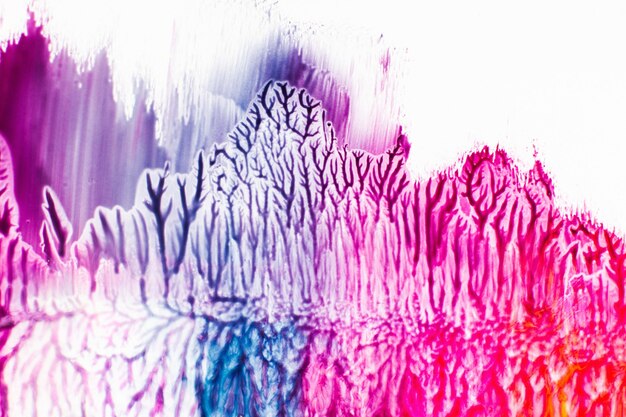
Showcasing Your Work
Once you’ve poured your creativity into your illustrations, the next crucial step is to share them with the world. Showcasing your work is not just about gaining recognition; it’s about connecting with a community, receiving feedback, and potentially opening doors to new opportunities. In the realm of underground fashion illustration, platforms that embrace individuality and niche content are often more effective than mainstream channels. It’s about finding your tribe and presenting your art in a way that resonates with them, ensuring your unique voice finds its rightful audience.
Building a strong portfolio, whether physical or digital, is essential. This portfolio should represent the best and most diverse aspects of your style, indicating your range and capabilities. The presentation of your work is just as important as the artwork itself. High-quality scans or photographs, clear descriptions, and thoughtful curation can significantly enhance how your illustrations are perceived. Remember that every piece you share contributes to your artistic identity and defines your presence within the creative community.
Building an Online Presence
A digital portfolio is indispensable in today’s art world. Websites like Behance, Instagram, or even a personal blog can serve as powerful platforms to display your work. Instagram, in particular, with its visual focus, is excellent for illustrators. Use relevant hashtags (e.g., #undergroundfashionillustration, #altfashionart, #subculturestyle) to reach a wider, targeted audience. Regularly update your portfolio with new work, and consider sharing your process (sketch to final piece) to engage your followers. Consistency and authentic engagement are key to growing your online presence.
- Dedicated Portfolio Website: A professional hub for your best work.
- Social Media Engagement: Instagram, Pinterest, or Tumblr for visual sharing.
- Niche Art Forums & Communities: Connect with like-minded artists and fans.
- Blogging About Your Process: Share insights and inspire others.
Don’t be afraid to experiment with different presentation styles online. From high-resolution image galleries to short video clips showcasing your drawing process or behind-the-scenes glimpses, diverse content keeps your audience engaged. Always credit any external inspiration or collaborations. Building a network of fellow artists and followers often means actively participating in discussions, providing constructive feedback to others, and being open to receiving it yourself.
Connecting with Underground Fashion Communities
Networking within the actual underground fashion scene is invaluable. Attend local zine fairs, indie designer markets, or alternative art shows. Look for opportunities to collaborate with emerging designers, musicians, or photographers who share a similar aesthetic. Many underground communities thrive on collaboration and mutual support. Offering to illustrate lookbooks for small brands or creating art for a band’s album cover can provide concrete experience and broaden your network. Authentic connections can lead to more fulfilling projects and a deeper understanding of the subculture you’re illustrating.
Submitting your work to independent publications, online zines, or even starting your own small print project can also be a great way to gain exposure. These avenues often appreciate raw, unconventional talent more than large commercial entities. Remember, the underground thrives on passion and genuine interest, so approaching these communities with respect and enthusiasm will be your best approach. Your commitment to the alternative scene will reflect positively on your illustrations, adding yet another layer of authenticity to your artistic endeavors.
| Key Aspect | Brief Description |
|---|---|
| 🎨 Unique Style | Develop distinctive mark-making and visual voice for authentic expression. |
| ✍️ Core Techniques | Master figure drawing, expressive lines, and diverse mediums (traditional/digital). |
| 🔍 Underground Inspiration | Seek ideas from zines, street art, subcultures, and alternative fashion. |
| 🌐 Showcase & Connect | Build online presence and engage with niche fashion communities for exposure. |
Frequently Asked Questions
▼
“Underground” in fashion illustration refers to styles that prioritize individuality, subcultural influences, and a departure from mainstream commercial aesthetics. It often embraces DIY elements, raw emotion, and unconventional forms. The illustrations typically reflect a rebellious spirit, focusing on niche communities and alternative expressions rather than mass-market appeal or traditional beauty standards.
▼
Formal art training is not strictly necessary, but a basic understanding of drawing fundamentals like figure drawing and perspective is highly beneficial. Many successful underground fashion illustrators are self-taught or learn through practice and observation. The emphasis on individuality and expressive style means that passion and creative vision often outweigh academic credentials, making it an accessible field for dedicated beginners.
▼
For beginners, traditional mediums like pencils, fineliner pens, and charcoal are excellent for mastering line work and texture. Markers and watercolors can introduce color effectively. Digitally, a graphics tablet with software like Procreate (for iPad) or a free program like Krita can also be great starting points. The “best” medium is often the one you find most comfortable and expressive.
▼
Developing a unique style involves consistent practice, drawing inspiration from diverse sources (especially niche subcultures and street art), and fearless experimentation. Don’t be afraid to exaggerate, distort, or use unconventional techniques. Analyze what aspects of underground fashion resonate most with you and allow your personal interpretations to guide your artistic choices. Your distinct voice will emerge through this process of self-discovery.
▼
Look for inspiration beyond mainstream fashion publications. Explore independent fashion zines, street style blogs focused on alternative aesthetics, subcultural music scene photography, vintage stores, and local DIY markets. Attending art shows and engaging with independent designers and artists within the underground community can also provide rich, authentic resources and spark fresh creative ideas for your illustrations.
Conclusion
Embarking on the journey of the art of underground fashion illustration is an invitation to explore the boundless territories of creativity, where rules are bent and personal expression reigns supreme. By embracing foundational techniques, boldly experimenting with mediums, and immersing yourself in the rich tapestry of subcultural aesthetics, you can cultivate a unique style that truly captures the raw, untamed spirit of underground fashion. This path promises not just artistic growth, but a profound connection to a vibrant community that celebrates individuality and unconventional beauty.
